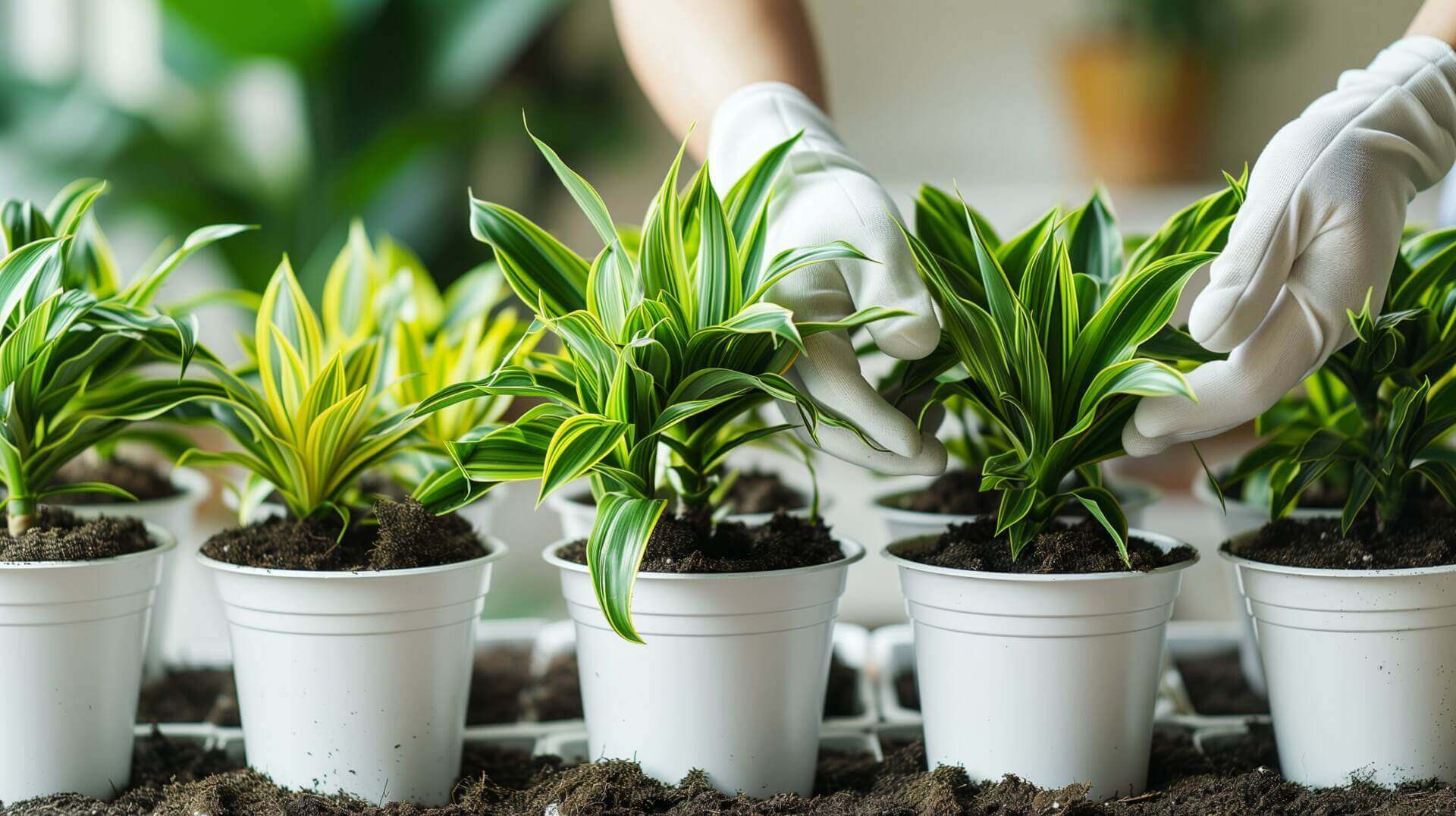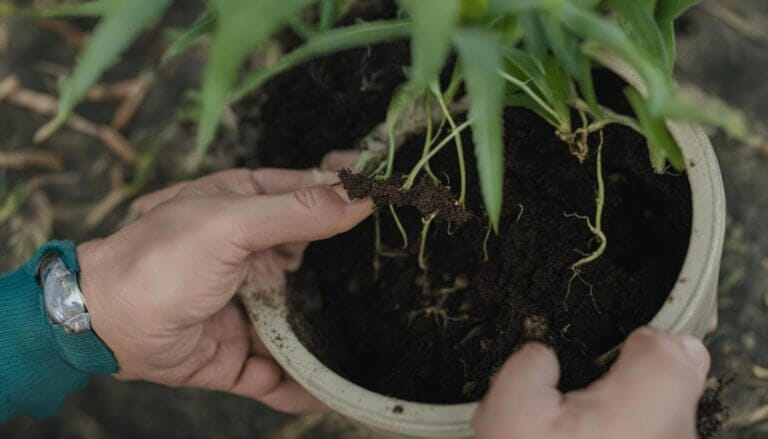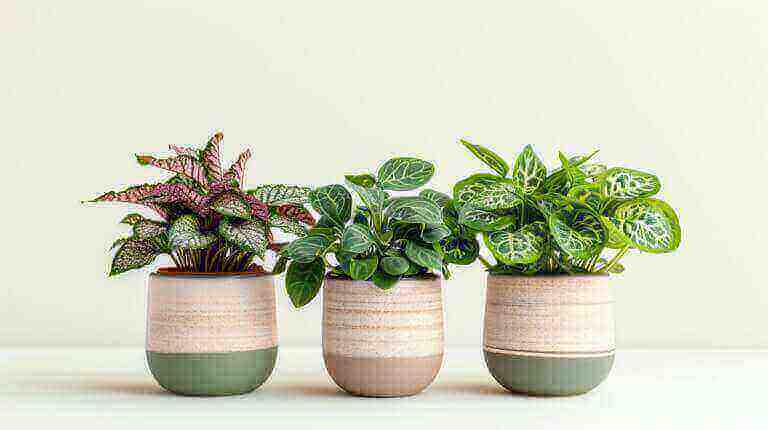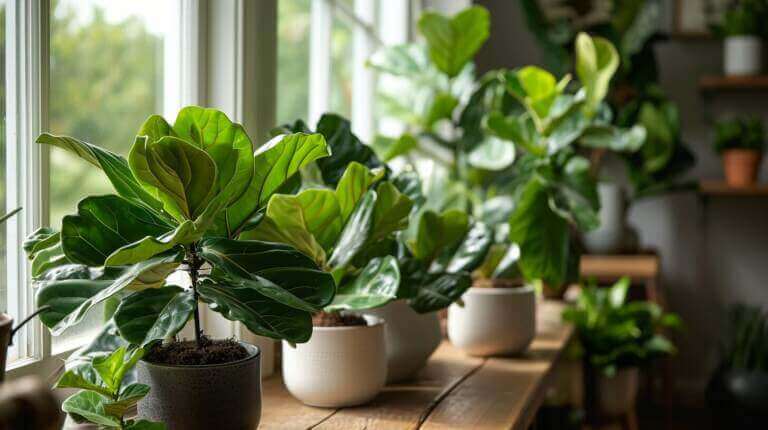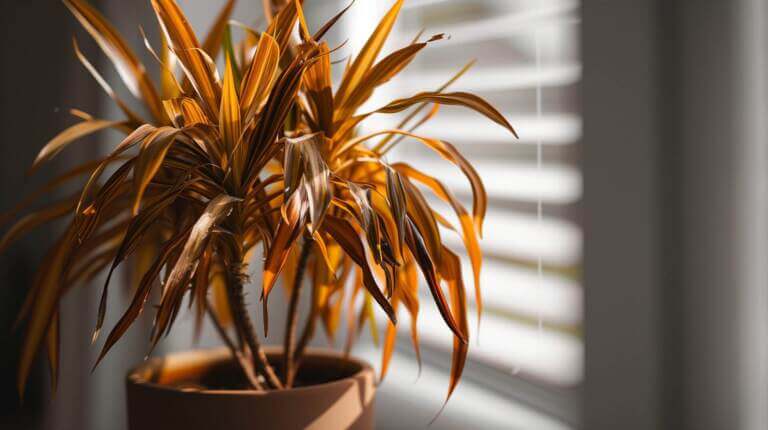How to Propagate Dracaena Houseplants: The Best Methods
Propagating Dracaena houseplants is an excellent way to expand your indoor garden and create new plants from your existing ones. There are a few different way to propagate a Dracaena plant, including air layering and stem cuttings. These methods allow you to grow new plants from a parent plant, giving you the opportunity to expand your collection or share plants with friends and family. With the right techniques and care, you can successfully propagate Dracaena plants and enjoy the satisfaction of watching your new plants thrive.
Key Takeaways:
- Air layering and stem cuttings are effective methods for propagating Dracaena.
- Air layering involves making a cut in a healthy branch and wrapping it with moist sphagnum moss and clear plastic to encourage root growth.
- Stem cuttings can be taken by cutting below a leaf node and planting the cutting in soil or water, using rooting hormone to encourage root growth.
- It takes about 2-8 weeks for the roots to develop in stem cuttings, and once established, the plant should continue to grow and thrive.
- Proper care, including providing the right amount of water, light, and fertilizer, is important for the successful propagation of Dracaena houseplants.
Propagation Method For Dracaena Plant
There are several methods you can use to propagate Dracaena, including stem cuttings and air layering. Stem cuttings involve taking a cutting from a portion of the stem and encouraging the growth of a new root system either in soil or water. To start, cut below a leaf node and remove any lower leaves. Dip the cutting in rooting hormone to stimulate root growth and then either plant it in a pot filled with well-draining soil or place it in a jar filled with water.
Air layering is another effective method of propagating Dracaena. This technique involves making a cut in a healthy branch and placing moist sphagnum moss around the cut section. Cover the moss with clear plastic and secure it in place. Over time, roots will develop in the moss and once they are established, the cutting can be separated from the parent plant and potted.
Regardless of the method you choose, it is important to provide your propagated Dracaena with proper care. Keep the soil moist but not waterlogged, and ensure the plant receives indirect sunlight. Fertilize regularly to support growth and address any pest issues promptly. With the right conditions and care, your propagated Dracaena will thrive and grow into a beautiful new plant.
| Propagation Method | Key Steps |
|---|---|
| Stem Cuttings | – Take a cutting below a leaf node – Dip the cutting in rooting hormone – Plant in soil or place in water – Maintain appropriate moisture and light conditions |
| Air Layering | – Make a cut in a healthy branch – Wrap the cut section with moist sphagnum moss and plastic – Wait for roots to develop – Pot the rooted cutting |
Care Tips for Propagated Dracaena Houseplants
After successfully propagating your Dracaena, it’s crucial to provide them with the proper care to ensure their continued growth and health. Here are some essential tips to help you care for your propagated Dracaena:
1. Environmental Conditions:
Dracaena indoor houseplants thrive in indirect sunlight, so place them in a location that receives bright, filtered light. Avoid exposing them to direct sunlight, as it can scorch their leaves. Maintain a temperature range of 65-80°F (18-27°C), as Dracaena prefers warm conditions.
2. Watering:
Water your propagated Dracaena when the top inch of soil feels dry. It’s important to strike a balance between underwatering and overwatering, as both can be detrimental to the plant’s health. Ensure the pot has proper drainage to prevent waterlogged roots.
3. Fertilization:
Feed your propagated Dracaena once a month during the growing season with a balanced liquid fertilizer. Dilute the fertilizer to half the recommended strength to prevent fertilizer burn. Avoid fertilizing during the winter months when the plant is in its dormant phase.
4. Pest Control:
Keep an eye out for common pests such as spider mites and mealybugs. If you notice any signs of infestation like webbing or white cottony clusters on the leaves, isolate the affected plant and treat it with an appropriate insecticidal soap or oil spray.
5. Transplantation:
If your propagated Dracaena outgrows its current container, it may be time to transplant it into a larger pot. Choose a pot that is 1-2 inches larger in diameter and use a well-draining potting mix. Gently loosen the roots before planting it in the new pot.
By following these care tips, you can ensure that your propagated Dracaena houseplants thrive and bring beauty to your indoor space. Enjoy watching them grow and flourish!
FAQ
What are the different methods of propagating Dracaena?
Dracaenas can be easily propagated using a few different methods to give you more of these lush, tropical houseplants.
One option is stem cuttings – cut the stem off a healthy branch and rooting it in water or soil. Leaf cuttings also work well – simply remove a leaf and plant the base in potting mix. Air layering is another technique where you wound a stem while still attached and encourage aerial roots to form before severing.
Dividing mature dracaena root balls is also very effective at creating new plants. Gently tease the root mass into smaller sections, ensuring each division has some roots and growth points. Dracaenas will also produce offsets called pups that can simply be removed and potted up.
How do I take stem cuttings to propagate Dracaena plants?
Propagating dracaena from stem cuttings is quite easy. Start by selecting a healthy stem with a few leaves attached and snip it just below a leaf node using sterile shears. Remove lower leaves and dip the end in rooting hormone. Plant the cutting in well-draining potting mix, sand, or perlite. Cover with plastic to retain humidity and provide bright, indirect light. Keep the soil consistently moist but not saturated as roots develop over 4-6 weeks. Once rooted, remove the plastic and transplant into a standard potting mix when new top growth appears.
What is air layering and how does it work for propagating Dracaena houseplants?
Air layering is a propagation method that encourages aerial root growth on an intact plant. For dracaenas, this involves wounding a stem while it’s still attached to the parent plant, covering it with media, and allowing roots to form before severing the cutting.
To air layer a dracaena, make a shallow cut into a stem and wrap the wound with damp sphagnum moss or coco coir then plastic. This creates a moist rooting environment on the stem. Within a few weeks, new adventitious roots should emerge from the wound.
Once sufficient healthy roots have grown from the air layered area, use sterile shears to cut below the root mass, separating the newly rooted top. Then simply pot up the cutting in soil like any other rooted plant division. The high humidity and wound encourage quick root formation without needing to remove cuttings.
How long does it take for the roots to develop when propagating Dracaena?
When propagating dracaena houseplants, it typically takes 2-8 weeks for healthy roots to develop depending on the method used.
Stem cuttings rooted in water will generally form roots within 4-6 weeks. Leaf cuttings take a bit longer, around 6-8 weeks to generate new root growth. Air layering can produce roots in as little as 2-3 weeks.
Divisions of mature dracaena root balls will root the quickest since they have an established root system. New roots will begin growing within just 2-4 weeks after dividing. Offsets that are naturally produced via pups will also root rapidly.
Patience is important, as some dracaena varieties are slower rooters than others. Providing consistent warmth and humidity will help speed up the process. In a couple months or less, your new dracaena propagules will be ready for potting up once those new white roots are visible.
What care should be taken to ensure successful propagation of Dracaena?
To successfully propagate dracaena houseplants, there are a few key care tips to ensure your new plants thrive:
- Use sharp, sterile tools and healthy parent plants to limit disease spread.
- Provide high humidity by enclosing cuttings in plastic or using a propagation dome.
- Keep soil moist but not soaked for cuttings or divisions.
- Give bright, indirect light but avoid direct sun exposure.
- Use well-draining potting mix and containers with drainage holes.
- Maintain consistent warmth around 70-75°F for faster root growth.
- Remove plastic coverings once new growth emerges to prevent mold.
- Transplant into larger containers once rooted with fresh potting soil.
Following sterile practices, monitoring moisture, and giving ideal light and warmth will get your new dracaena cuttings off to a strong start. Take care not to overwater or let cuttings dry out completely.
Can I transplant a rooted cutting into a larger pot when propagating Dracaena houseplants?
Yes, it is possible to propagate Dracaena by transplanting a rooted cutting into a larger pot.

